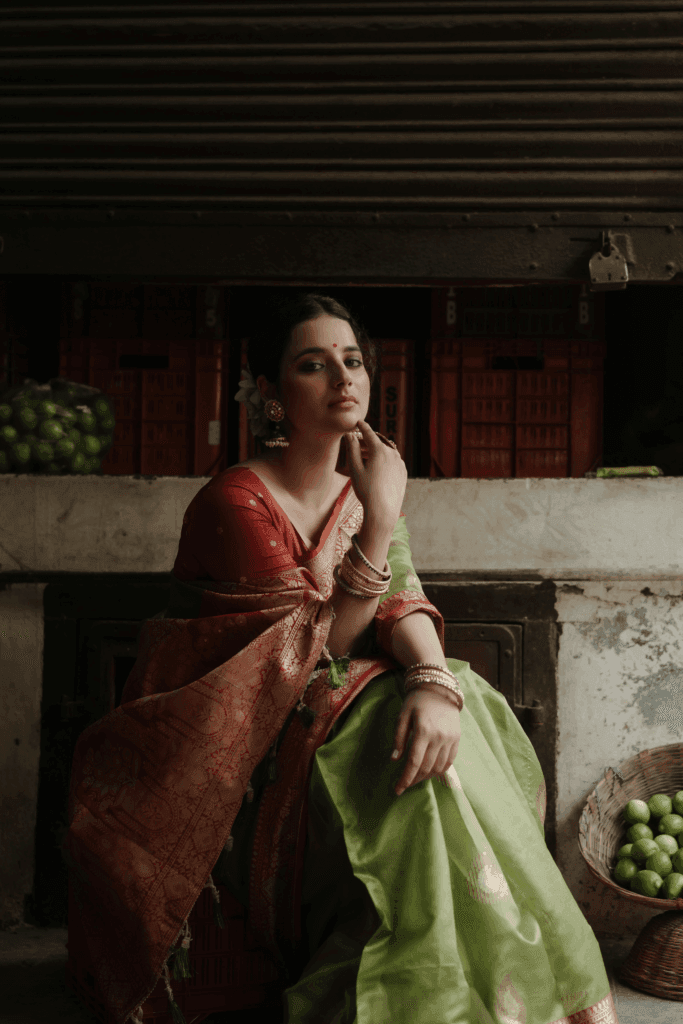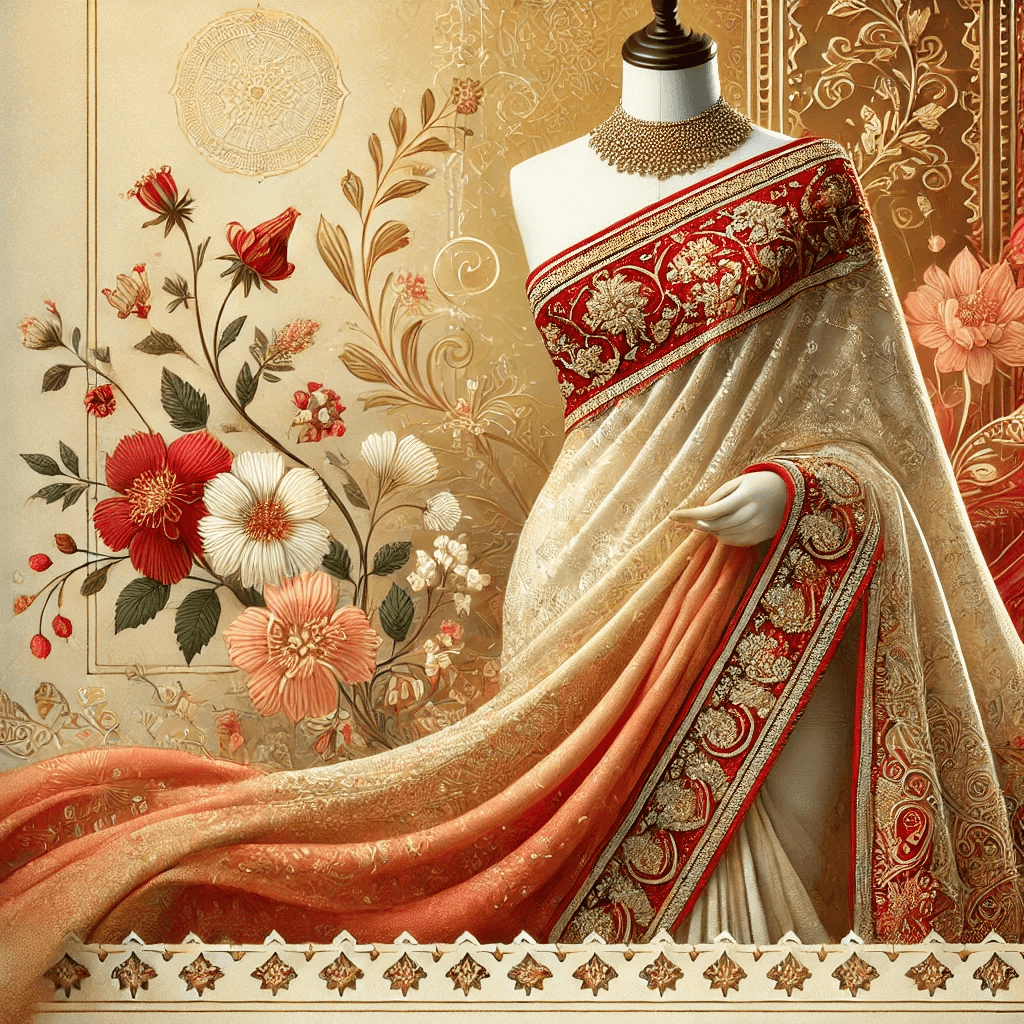From the world of exotic hand-block prints comes yet another masterpiece of artwork, the ajrakh print. Ajrakh is a timeless saga of craftsmanship. A reflection of culture, heritage and tradition printed on premium fabric, ajrakh is a stunning print that carries the essence of time-honoured techniques. Let’s dive into the exotic world of this beautiful artwork.
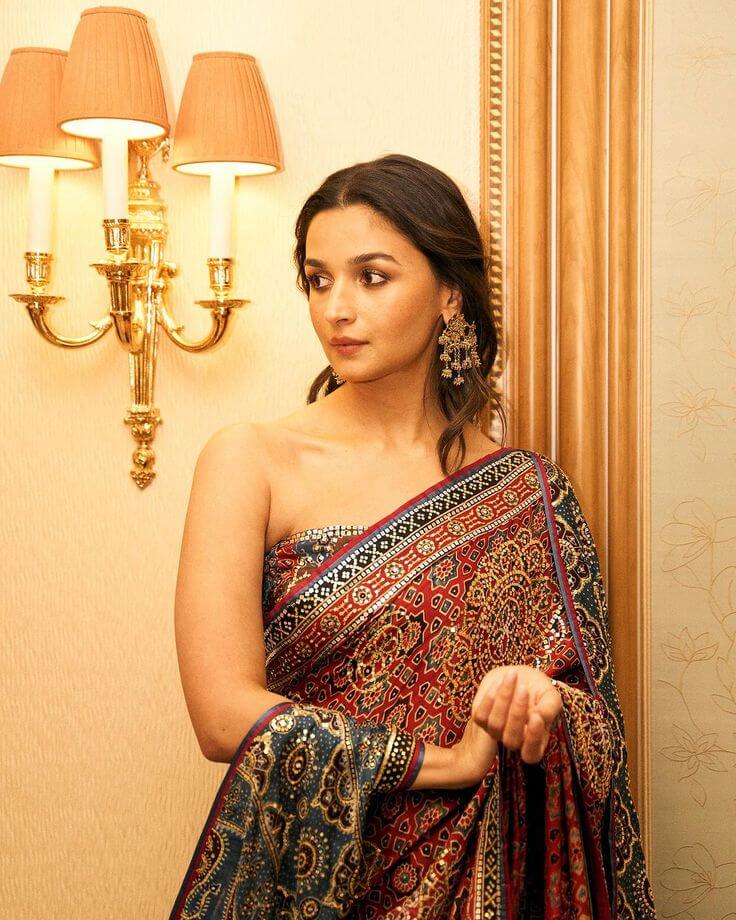
The Art of Ajrakh
Dating back 4000 years, Ajrakh isn’t just a printing technique, it speaks of history and heritage. This intricate handblock print technique hails from the Kutch region of Gujarat, and Barmer, Rajasthan. The artisans carefully carve wooden blocks, and then create symmetrical and detailed patterns. These designs are inspired by nature, geometric shapes, and Mughal motifs.

The Unique Colours and Patterns
The colours of an Ajrakh saree aren’t very diverse. The limited colour options in an ajrakh print fabric are because the colours are mostly come from natural sources. Indigo, madder red, black, and white are the most common colours of this print. These colours are sourced from plants, minerals, and even mud. The process of making an Ajrakh saree involves multiple washes, dyeing, and printing which results in a fabric that is rich in depth, texture, and durability.
The Craftsmanship Behind Ajrakh
Ajrakh sarees are the result of skilled craftsmanship passed down through generations. The artisans, known as Khatris, dedicate their lives to preserving this traditional hand-block print technique. They meticulously create intricate designs that require both precision and patience. Each piece is a narrative of dedication and cultural pride.
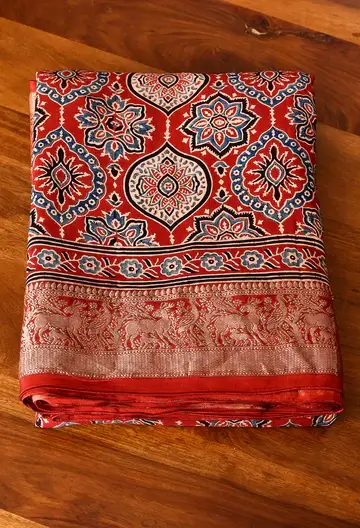
The Process of Making an Ajrakh Saree
The making of an Ajrakh saree is a cumbersome and labour-intensive process that involves several stages:
- Pre-washing and Preparation: Artisans first wash the fabric, usually cotton or silk to remove impurities and soaked in a solution of camel dung, soda ash, and castor oil. This prepares the fabric for dye absorption.
- Mordant Application: They then treat the fabric with a natural mordant such as myrobalan to enhance dye fixation and then dry it under the sun.
- Block Printing: Skilled artisans carve wooden blocks with detailed patterns. Using these blocks, they apply resist paste made of lime and gum Arabic, creating the base design on the fabric.
- Multiple Dyeing Stages: The artisans then dye the fabric in natural colours such as indigo, madder red, and black. Between each dyeing, the fabric undergoes repeated washing and sun-drying.
- Re-Blocking and Overprinting: They remove the resist-printed areas and add new patterns with different colors. This step is repeated multiple times, creating layers of intricate designs.
- Final Washing and Finishing: The saree is washed several times to remove excess dyes and ensure colorfastness. The final result is a beautifully detailed Ajrakh saree, ready to be worn and admired.
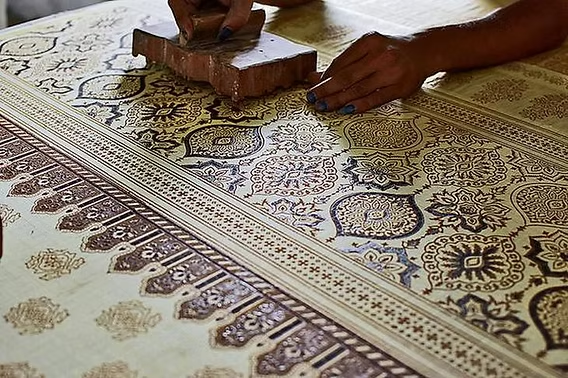
Handblock Print: A Labour of Love
Creating an Ajrakh saree is time-consuming. The process can take up to two weeks. Each step requires precision and patience. Artisans dip the fabric in natural dyes and then print the designs using hand-carved blocks. The artisans repeat the process layer by layer, ensuring a seamless flow of colours and patterns. Because of this meticulous technique, no two sarees are exactly the same.
Ajrakh Saree: A Sustainable Choice
Sustainability is one of the key reasons to choose an Ajrakh saree. Since the dyes are natural, they are eco-friendly and skin-friendly. Also, the hand-block print method uses minimal machinery, reducing carbon footprints. Many people are now shifting to handmade textiles to support sustainable fashion.
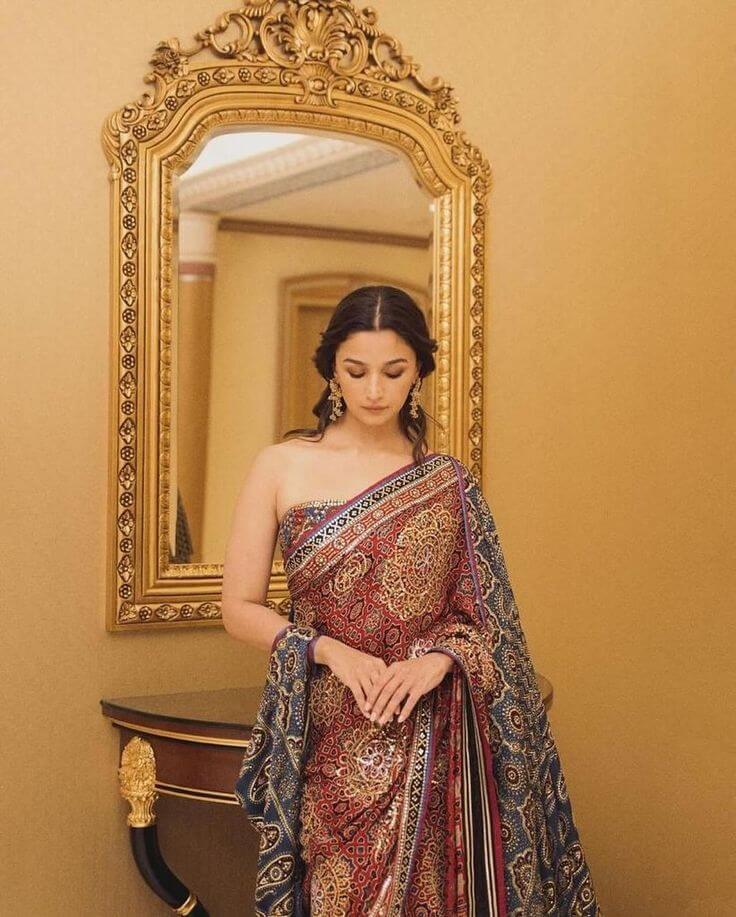
The Cultural Significance
Ajrakh sarees hold deep cultural value. Traditionally, the pastoral communities of Gujarat and Rajasthan wore the Ajrakh print. But today, Ajrakh has bagged admirers globally. Many designers incorporate Ajrakh hand-block print into contemporary fashion. Today, we have sarees, dupattas, dresses, co-ord sets, tops and many more attires in ajrakh prints.
Styling an Ajrakh Saree
You can style your Ajrakh sarees in a number of styles. Experiment with drape styles like belted drape, mermaid drape, the gaati dhoti style, Coorgi drape etc. to break-free from ordinary styles. Style with appropriate jewellery pieces. These sarees look best with silver and oxidized jewellery. A simple bindi and traditional juttis are a must for a traditional look. You can also go for an Ajrakh saree with a belt for a contemporary look. Go for a modern blouse like Alia Bhatt for a fusion look. Festivals or casual outings, an Ajrakh saree works for every occasion.
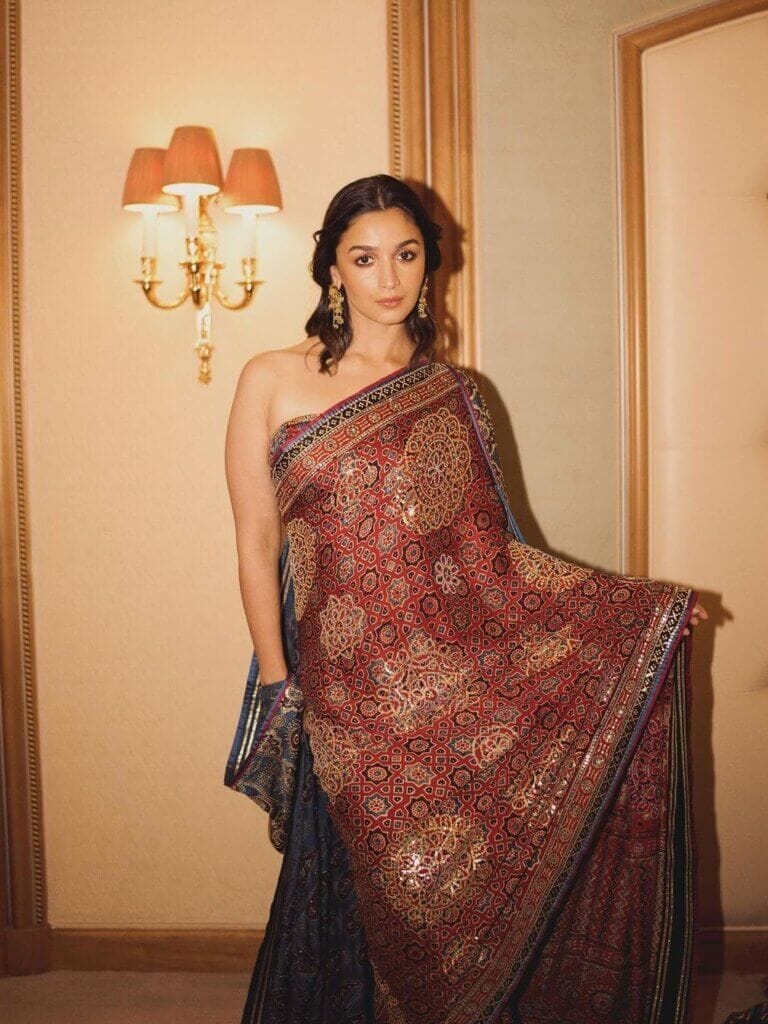
Wrap Up In Prints And Patterns
Blending tradition and style, this hand-block print saree is a wardrobe staple. Own one and flaunt tradition with immense pride. The hand-block print designs, rich colours will definitely steal your heart. Drape, experiment with styles and make heads turn.

